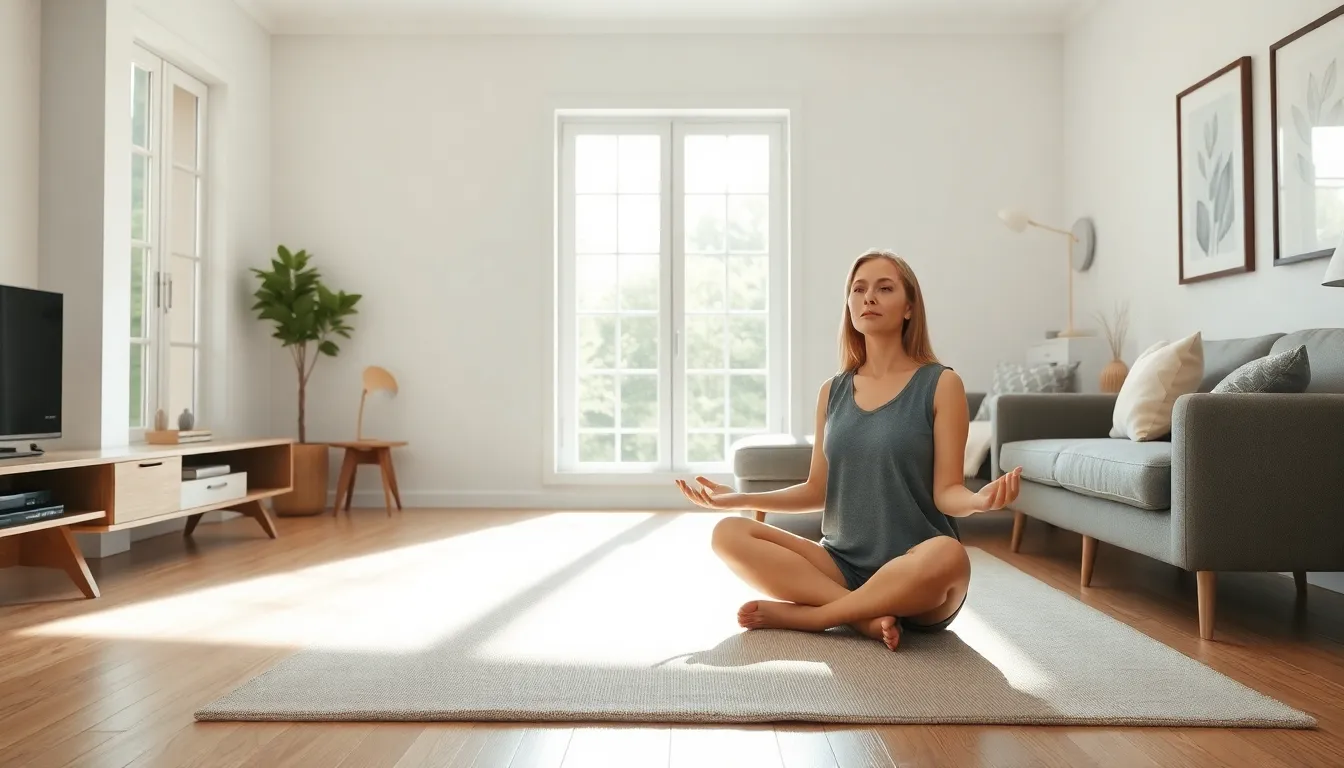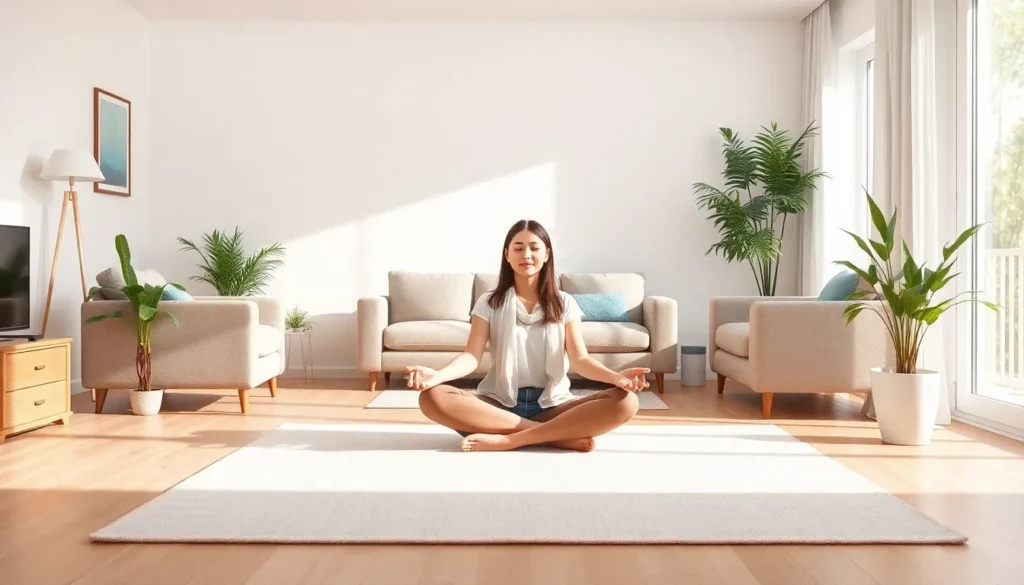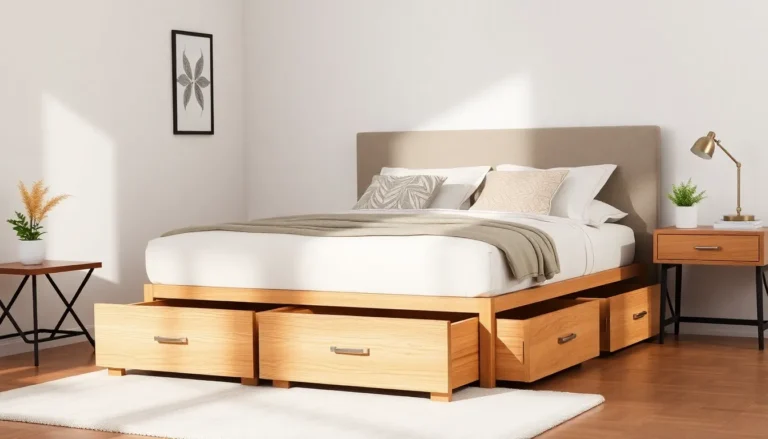Table of Contents
ToggleIn a world overflowing with stuff, minimalist living offers a breath of fresh air—or maybe just a cozy, clutter-free corner to sip that overpriced organic coffee. Imagine trading in the chaos of clutter for a serene space that sparks joy. Minimalism isn’t just a trend; it’s a lifestyle choice that promises more time, less stress, and a surprising amount of zen.
Picture this: fewer possessions mean fewer decisions. No more agonizing over which pair of shoes to wear or where to stash that mystery box of old receipts. Instead, they can focus on what really matters—like finally finishing that Netflix series or perfecting their avocado toast recipe. Embracing minimalism could be the key to unlocking a simpler, more fulfilling life. Ready to dive into the art of living with less? Let’s explore how to declutter both your space and your mind.
Understanding Minimalist Living
Minimalist living emphasizes simplifying life by reducing excess. This lifestyle centers on the idea that less is more, allowing individuals to concentrate on experiences rather than possessions. By scaling down physical belongings, a person can create a peaceful environment that minimizes distractions.
Focusing on essential items leads to fewer decisions. Such clarity often reduces stress, giving individuals more mental space to pursue passions. Engaging in minimalist living encourages prioritizing quality over quantity in personal possessions. Trends show that a clutter-free environment enhances productivity and well-being.
Many people find decluttering liberating. This process doesn’t just apply to physical spaces; mental decluttering also plays a key role. Techniques like journaling or meditation help maintain a clear mindset while embracing a minimalist approach. It’s important to regularly assess personal items and decide which truly brings joy.
Adopting minimalist living fosters deeper connections. Focusing on quality relationships often takes precedence over material goods. Experiencing life in this way leads to appreciating moments spent with loved ones. Embracing simplicity allows individuals to allocate time for meaningful activities.
Emphasizing a minimalist approach cultivates intentional living. Each choice reflects values and priorities, leading to a more fulfilling life. Minimalism promotes mindfulness, guiding individuals towards sustainable practices that benefit both the individual and their environment. Choices made in line with minimalist principles contribute to a serene lifestyle with purpose.
Benefits of Minimalist Living


Minimalist living promotes various benefits that enhance overall well-being. It encourages individuals to embrace a simplified lifestyle, leading to deeper satisfaction and mindfulness.
Mental Clarity and Focus
Minimalism fosters mental clarity by reducing distractions. A clutter-free environment enables individuals to concentrate on tasks without the overwhelm created by excessive possessions. Fewer items mean fewer decisions, allowing for enhanced focus on priorities. Enhanced focus often leads to increased productivity and improved creativity. Individuals can experience a sense of peace as they eliminate unnecessary stressors. With less visual clutter, clarity improves in both thoughts and intentions, allowing for a more purposeful life. Techniques such as journaling or meditation further amplify these benefits, illuminating paths to self-discovery and mindfulness.
Financial Freedom
Financial freedom becomes attainable through minimalist living. Less emphasis on acquiring material goods often translates to lower spending and improved savings. Individuals experience relief from financial burdens as they prioritize meaningful investments over unnecessary purchases. Minimalism encourages mindful consumption, allowing for a more intentional approach to spending. With reduced financial stress, individuals can allocate resources towards experiences that provide lasting happiness and fulfillment. Moreover, the accumulation of less debt contributes to an enhanced sense of security. This shift in mindset often leads to a more sustainable lifestyle that values quality over quantity, ultimately promoting financial well-being.
Practical Tips for Embracing Minimalist Living
Embracing minimalist living involves specific practical steps that streamline life and promote clarity.
Decluttering Your Space
Begin by assessing your belongings. Identify items that no longer serve a purpose or bring joy. Create categories such as keep, donate, and discard to simplify decision-making. Focus on one room at a time, making the task manageable. Use tools like boxes or bags for organization, ensuring a clear visual of your progress. A clutter-free space allows for improved focus and productivity. Test the “one-year rule,” which states if an item hasn’t been used in the past year, it’s time to let it go. Even small daily decluttering actions can lead to significant changes over time.
Mindful Consumption
Adopt a thoughtful approach when acquiring new items. Analyze the necessity of each purchase and consider its long-term value. Set specific criteria for what constitutes a worthy addition to your life. Provide space for reflecting on purchases before making them, allowing for impulse control. Prioritize quality over quantity, investing in durable, meaningful possessions. Implement a waiting period on non-essential purchases to assess their relevance. Shedding the habit of mindless shopping leads to reduced clutter and increased financial freedom, ultimately enhancing overall satisfaction in life.
Minimalist Living Spaces
Creating minimalist living spaces enhances the experience of this lifestyle choice. Focused design leads to a functional environment that supports daily activities and emphasizes simplicity.
Designing a Functional Home
Functional homes prioritize essential items and minimize distractions. arranged spaces encourage intuitive use, allowing easy access to necessities. Layouts should incorporate multipurpose furniture, maximizing utility while reducing clutter. Storage solutions like built-in shelving or hidden compartments keep belongings organized. Each item in a minimalist home should serve a purpose, reinforcing the value of quality over quantity.
Incorporating Nature
Incorporating nature into minimalist living spaces boosts tranquility and connection to the environment. Natural light enhances the mood and creates an inviting atmosphere. Use houseplants to purify air and add color without cluttering surfaces. Open spaces promote ventilation and a sense of freedom. Natural materials like wood or stone foster warmth and grounding, further establishing a serene home environment.




